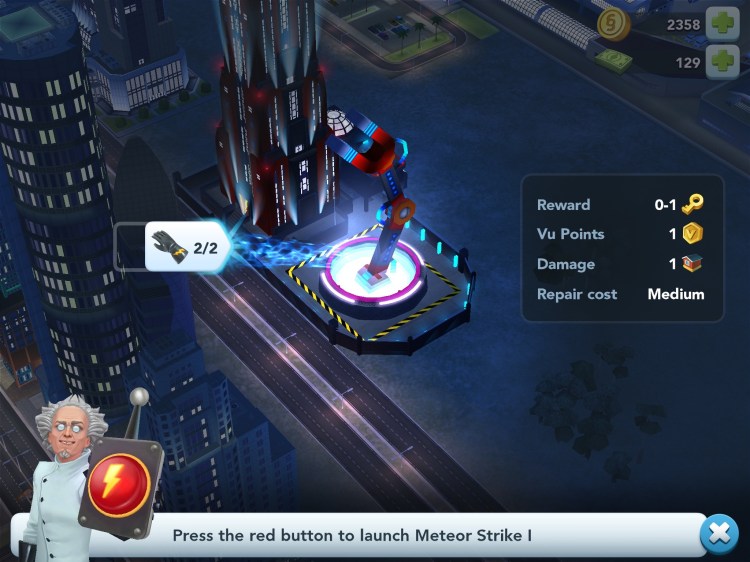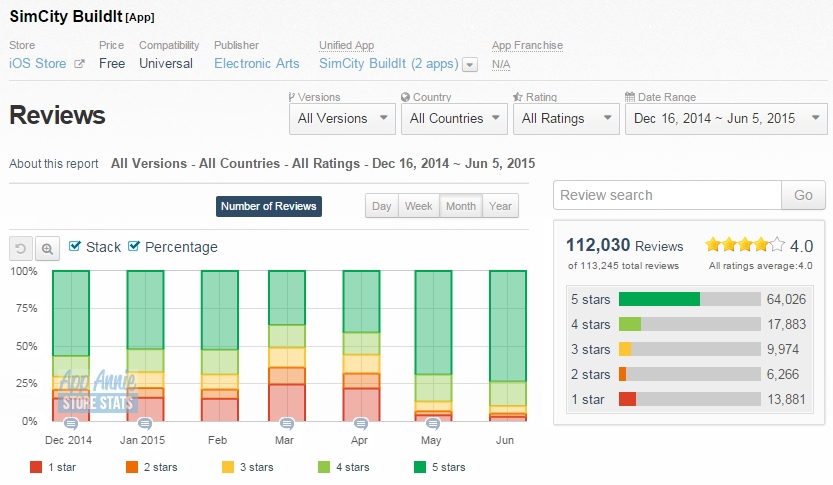SimCity is building its empire on mobile.
EA Mobile’s SimCity BuildIt launched about six months ago on Dec. 16. Almost 40 million people worldwide have played it since then, EA Mobile vice president and group general manager Jason Willig said in an exclusive interview with GamesBeat, making it potentially the biggest SimCity title ever created. Most of those users are from outside the United States, and engagement and retention statistics are “very high,” he said.
“I think SimCity BuildIt has taken off for a number of reasons: First and foremost, it was made by a deeply experienced team with incredible creative and technical horsepower,” he said. BuildIt was crafted by EA Mobile’s studio tracktwenty in Helsinki, Finland. “[The] design is native to the mobile platform from the ground up, versus a PC port, incorporating elements like crafting, short sessions, and a balance of linear and sandbox gameplay.
“Those aspects, in combination with more traditional SimCity brand pillars like disasters, services and specializations, all wrapped in a gorgeous, 3D package, really spoke to consumers.”
Some of those consumers expressed frustration over the company’s apparent focus on the mobile game over the PC versions in forums and article comments. Electronic Arts recently announced that it would close SimCity 2013 studio Maxis Emeryville, absorbing those operations into the corporation’s other locations (including Helsinki). And the global success of BuildIt may ironically have opened the door for the success of SimCity PC-based competitors.
“SimCity continues to be one of the best-known franchises in the industry, and SimCity BuildIt provides an excellent case-in-point on how EA as a publisher has successfully transitioned to mobile,” said Joost van Dreunen, chief executive of analyst SuperData Research. “However, in the process it managed to alienate a large number of consumers. For example, Cities: Skylines by Paradox Interactive has proven to be a major success on PC. I think this mobile-only approach by EA for SimCity is a missed opportunity because the company would have arguably been able to cross-promote and build an even large market for itself.”
But analysts agree with Willig: BuildIt has been a tremendous success on mobile. It’s commanded a solid place on the charts since its launch, always hovering in the top 10 in U.S. sim and strategy games on iPhone and iPad, in the top 100 for U.S. games overall on those platforms, and in the top 150 worldwide, according to App Annie reports.
Those players stick with it: They spend 40 minutes a day in the game on average, Willig said, checking in five to six times a day for a few minutes each time. And most say they love it. Willig says the Apple App Store review score has averaged 4.5 stars for the United States, France, Korea, Germany, and the United Kingdom; App Annie puts the average at 4.0 worldwide.
“We’ve designed SimCity BuildIt to keep players engaged for years to come,” Willig said. “We see this iteration of SimCity evolving more similarly to games like World of Warcraft, Hay Day, and The Sims FreePlay, where new content, features and systems are introduced on a regular basis to keep players engaged, retained, and rewarded in an ever-expanding and evolving game for a very long period of time. The best mobile games can have a [3 year-plus] life cycle, so we’re just getting started with SimCityBuildIt.”
So far the team has released a major addition focusing on Tokyo Town: a new area, accessed by airport, designed mostly to appeal to the game’s heaviest players. A recent update added new disasters, such as tornadoes, lightning, and marauding robots; the opportunity to visit other Mayors’ cities; new types of roads; and new houses of worship.
While the update added the ability to see others players’ work, it still doesn’t offer the chance to talk with them.
“Chat is not part of the game today,” Willig said. “It’s something we think about a lot, but in a different way … basically, not as an end in itself but as a means to facilitate meaningful gameplay interactions between players. We dipped our toe in social gameplay with the latest update. We’re studying engagement with this new feature, and we’re talking to our players about how we might expand social play.”
If the response to this update is good, the company will then focus more attention on the social aspect, including chat, he said.
“If we hear that there are other things more important, we’ll pursue the priorities our players set, as they sure seem to know best.”
He attributes the high amount of playtime in part to the structure, which uses micro-transactions to speed gameplay, not gate it, by accelerating crafting and shipment times.
“As a key design principle, progression in SimCity BuildIt is not tied to any type of micro-transaction,” Willig said. “While spending money does accelerate certain aspects of the game, a player can pretty much get everything for free. City growth — for example, increasing your city’s population — in SimCity BuildIt is tied to crafting goods from Commercial and Industrial Zones, versus Shipments.
“As designers, we think this is really fun, offering multi-layered sessions where players can focus on a variety of goals like upgrading Residential Zones, building Tokyo Town, completing Airport or Boat Shipments or Disaster Challenges or trading goods on the Global Market. Given some pretty impressive engagement metrics as well as what we hear directly from players, they seem to like it as well.”
While frustrated PC sim players may be turning to the mobile version for their fix, Willig said all players handle BuildIt differently than they did SimCity PC play.
“For a typical SimCity PC game, a players spends a significant amount of time — hours — in each session, but only one to two times per week,” he said. “For SimCity BuildIt, our players spend on average 6-10 minutes per session, five-six times every day. While averages can sometimes be misleading, you can see a big difference: snack-size play throughout the day on mobile, versus ‘strap in’ deeper sessions on PC.
“One thing that is similar is that engaged players play a lot, regardless of platform. Our most committed BuildIt players are probably spending 13-16 hours per week playing the game — this is a rough estimate, not a hard stat! — which is pretty impressive.”





